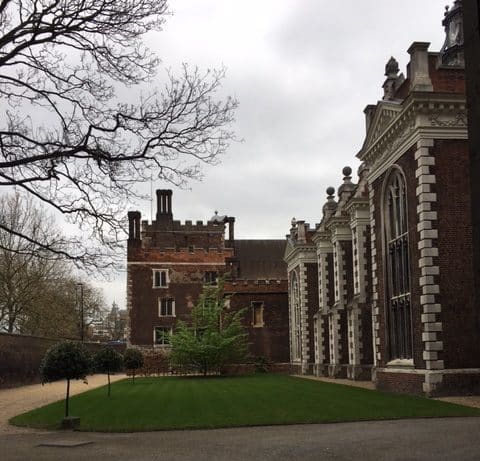
The consecration of Thomas Cranmer as Archbishop of Canterbury was actually the pivotal move that paved the way for Anne Boleyn to become Queen of England. At this point, there was no Church of England – this was the milestone that heralded and permitted it because it established a legal/spiritual passing of authority to show they weren’t making things up out of whole cloth…
In the Catholic Church, bishops were the direct descendants of the apostles through an unbroken succession created by the laying on of hands in the sacrament of holy orders. And yet, to borrow a phrase from Animal Farm, while all bishops were thus equal, some were more equal than others. The Archbishopric of Canterbury was central to Henry’s plans because it was the most senior Church position in England (yes, Cardinals are higher but these are appointments that are outside of the formal hierarchy…and England had no living Cardinal right then). The previous Archbishop of Canterbury, William Warham, had died in August of 1532 (read my post about it here) and Cranmer had been quickly nominated after that.
It was actually a bit of a surprise that Clement agreed to put Cranmer in the post – Cranmer was known to support Henry in the issue of his Great Matter. But Clement was still trying to keep Henry as a friend, and so he did him this favor. Big mistake. The papal bulls arrived around March 26, and they turned things around quickly. They had to: Anne Boleyn was pregnant, and her child had to be legitimate.
The biggest snag they hit: part of the consecration ceremony required Cranmer to swear obedience to Pope Clement VII and his successors and to defend the Roman Papacy against all men. They could not eliminate the oath without someone arguing that Cranmer’s consecration ceremony had not been proper – and that would have ruined the whole carefully-orchestrated point. The solution: before the ceremony, Cranmer made a statement in the chapter house at Westminster, in the presence of five lawyers. He declared that he did not intend to be bound by the oath of obedience to the Pope that he was about to take, “if it was against the law of God or against our illustrious King of England, or the laws of his realm of England”. Problem solved.
Once Cranmer was in place as the highest religious authority came the bill forbidding appeals to Rome – at which point Cranmer invalidated the King’s marriage to Catherine of Aragon and affirmed the validity of his marriage to Anne Boleyn so that Anne could be anointed and crowned. That happened on June 1, but that’s a story for another day…
***
If you like my posts, you’ll love my books! My Seymour Saga trilogy tells the gripping story of the short-lived dynasty that shaped the Tudor Era. Jane the Quene skews romantic, The Path to Somerset is pure Game of Thrones (without the dragons), and The Boy King is a noir coming-of-age. Get them now through Amazon, Barnes & Noble, Kobo, and Apple, or even your local independent bookstore!

(PS Already read them? Did you love them? Then please review them – even just a stars rating! It makes a huge difference in helping new readers find them and would mean the world to me!)

Isn’t he the piece of crap who had Anne Askew tortured on the rack then burned?
Nooo!!!! That was Stephen Gardiner!!!
Of course, Askew was a heretic in the view of the Church, so Bishop Gardiner was perfectly correct to treat her as any other cleric would treat heretics.
And Cranmer begins his archbishopric with a lie. I suppose because the king’s Great Matter and his own ascendancy to the highest clerical position in the land made lying a thing of no import.
There were many, many lies…Plus ca change…